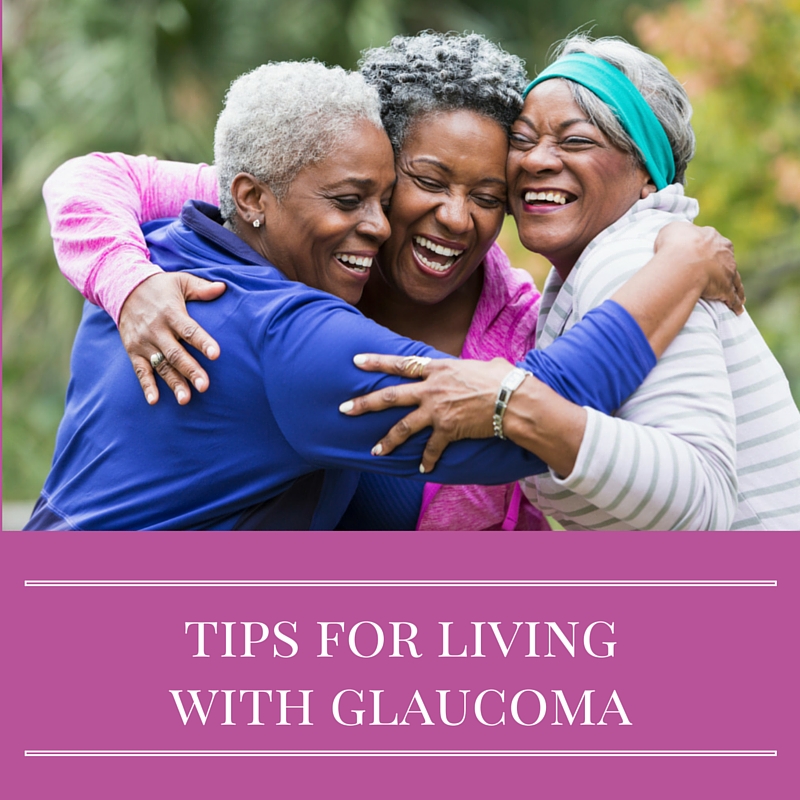January is National Glaucoma Awareness Month – An important time to raise awareness for this sight-robbing disease.
Glaucoma is an age-related disease and is the second leading cause of irreversible blindness in people over 40. Glaucoma is 6 to 8 times more common in African Americans than Caucasians. If you have a close blood relative with glaucoma, it raises your risk of getting it.
Glaucoma is the sneak thief of sight, since there are no symptoms and once vision is lost, it’s permanent. As much as 40% of vision can be lost without a person noticing.
More than 3 million people in the United States and over 60 million people worldwide, have glaucoma. Experts estimate that half of them don’t know they have it. Combined with our aging population, we can see an epidemic of blindness looming if we don’t raise awareness about the importance of regular eye examinations to preserve vision.
How to Help Raise Awareness
In the United States, approximately 120,000 are blind from glaucoma. Here are three ways you can help raise awareness:
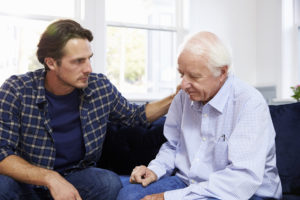
- Talk to friends and family about glaucoma. Do not keep it a secret. Let your family members know.
- Get involved in your community, educational seminars, support groups, and more.
- Visit our website for more information on glaucoma at discoveryeye.org/eye-conditions/glaucoma/.
What is Glaucoma?
Glaucoma is a disease that causes damage to the major nerve of the eye called the op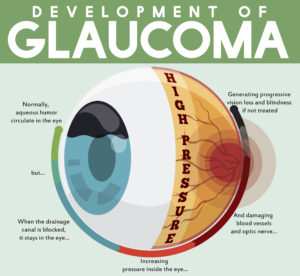 tic nerve, a part of the central nervous system that carries visual information from the eye to the brain.
tic nerve, a part of the central nervous system that carries visual information from the eye to the brain.
The eye experiences a gradual increase of intraocular pressure (IOP) due to an imbalance of the fluid produced in the eye and the amount of fluid drained. Over time, elevated IOP can cause vision loss. The most common form of glaucoma is primary open angle glaucoma which affects about 3 million Americans. However, there are other types including narrow angle, congenital, normal tension, and secondary glaucoma.
There is no cure for glaucoma—yet. However, medication or surgery can slow or prevent further vision loss. The appropriate treatment depends upon the type of glaucoma among other factors. Early detection is vital to stopping the progress of the disease.
Risk Factors
How do you know if you are at risk for glaucoma? Those at higher risk include people of African, Asian, and Hispanic descent. Other high-risk groups include: people over 60, family members of those already diagnosed, diabetics, and people who are severely nearsighted.
Regular eye exams are especially important for those at higher risk for glaucoma, and may help to prevent unnecessary vision loss. In the most common form, there are virtually no symptoms. Vision loss begins with peripheral or side vision, so if you have glaucoma, you may not notice anything until significant vision is lost.
Getting your eyes checked by an ophthalmologist regularly will be the best way to detect glaucoma or any other eye disease early.


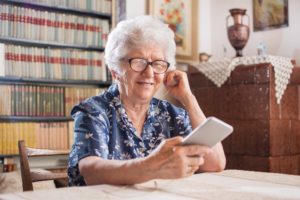 Many of us just use the basics on our smart phone and never personalize them for our own needs. It is worth taking the time to adjust our phones to take advantage of the special services that may be available and unused. Making a phone call or sending a text message with a smart phone can be challenging, however, with simple modifications, keeping in touch with the world can become a snap. Getting comfortable with your smart phone will make staying in touch with your loved ones very easy.
Many of us just use the basics on our smart phone and never personalize them for our own needs. It is worth taking the time to adjust our phones to take advantage of the special services that may be available and unused. Making a phone call or sending a text message with a smart phone can be challenging, however, with simple modifications, keeping in touch with the world can become a snap. Getting comfortable with your smart phone will make staying in touch with your loved ones very easy. Night vision can be impaired not only by the darkness, but also by the sudden glare of lights from oncoming cars, traffic signals, etc. Our eyes are forced to constantly adjust, leaving brief periods of impaired vision between adjustments.
Night vision can be impaired not only by the darkness, but also by the sudden glare of lights from oncoming cars, traffic signals, etc. Our eyes are forced to constantly adjust, leaving brief periods of impaired vision between adjustments. Discovery Eye Foundation is pleased to present the following excerpt from a just-released inspirational book called Walk in My Shoes. It is the result of two years of collaborative effort and is a unique collection of 27 powerful stories by individuals who are experiencing or witnessing the challenges of losing not one, but two senses: hearing and sight. The writers of Walk in My Shoes offer a glimpse into living with Usher syndrome, a progressive disease leading to blindness and deafness. Walk in My Shoes speaks to the more than 400,000 people worldwide dealing with Usher syndrome, to their families, to the professionals working with them, and to the rest of the world.
Discovery Eye Foundation is pleased to present the following excerpt from a just-released inspirational book called Walk in My Shoes. It is the result of two years of collaborative effort and is a unique collection of 27 powerful stories by individuals who are experiencing or witnessing the challenges of losing not one, but two senses: hearing and sight. The writers of Walk in My Shoes offer a glimpse into living with Usher syndrome, a progressive disease leading to blindness and deafness. Walk in My Shoes speaks to the more than 400,000 people worldwide dealing with Usher syndrome, to their families, to the professionals working with them, and to the rest of the world.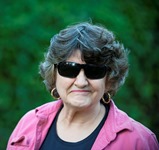 ABOUT THE AUTHOR
ABOUT THE AUTHOR


 Susan DeRemer, CFRE
Susan DeRemer, CFRE